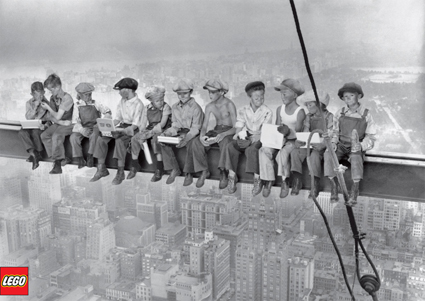The MUJI Design Award results are out! MUJI, a Japanese household products brand renowned for shedding branding in its products, launched a design competition some months back with the theme SUMI:
The objective is not to design something that is placed in the middle of the room, but towards the edges, not at the center and not directly around the center; you should look for somewhere that evades the eye, send us an object designed for that place, and name it as you wish.
We are not asking for any particular genre, it could be anything from furniture, stationery and office equipment, to everyday items.
4758 entries later, they present the winners. I am rather underwhelmed:
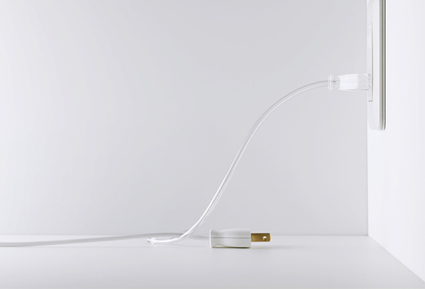
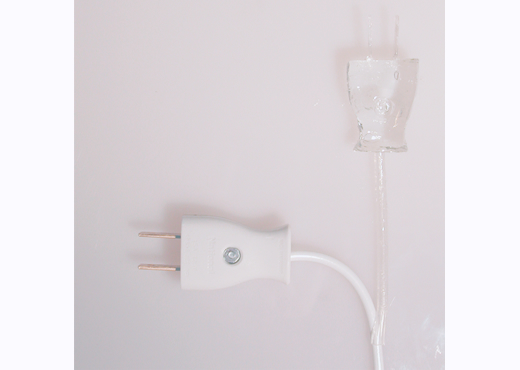
Gold Prize: A Cast-off Skin, by Yoh Komiyama (Japan)
What is it: A transparent plastic part hangs off your power cable, so that when you want to unplug your appliance to disconnect the power, you can plug the transparent plug into the power socket.
The Designer says: Traditional Japanese people called an existing thing in this world “Utsusemi.” “Utsusemi” is a cast-off skin of the cicada insect. The outlet which I saw was an empty container, an “Utsusemi”. An invisible soul (a transparent outlet plug) entered the container, and so it was reborn to connect the world. When an outlet plug is pulled out of an outlet it lies like a cast-off skin without a soul.
But will it yearn for an outlet so? “A cast-off skin” is based on this simple idea.
Judges say:
“A cast-off skin (nukegara)” takes advantage of the blind spots of such sensibility in people. It shows that one small indication can often evoke great awareness. – Kazuko Kaize, MUJI creative director
“The Gold winning design ‘A cast-off skin (nukegara)’ has taken many ideas into consideration whilst theoretic stance of product design may disfavor this approach. I think therefore it has a special value. We don’t live for rationality; we live because we want to enjoy a life enriching our soul. In fact, perhaps the current state of product design should be questioned.” – Takashi Sugimoto, MUJI Adviser (Interior Designer)
“Many electrical appliances are left connected to the power socket, always consuming small amounts of electric energy. This is due to the need to power the light indicating power is coming through. To turn the appliance completely OFF the plug must be unplugged. However, that creates a chaotic mass of ‘fallen plugs’ around the power socket. The Gold winning entry treats this condition in a positive and fresh manner to correspond to the theme of this award. This work allows us to share its creator’s attention toward the means of communication which gives a situation a meaning.” – Kenya Hara, MUJI Adviser (Graphic Designer)
“There was plenty of lively debate among the jurors about which 15 should be chosen and an even more lively debate about the winning entry. Personally it was not my favorite, and although I could appreciate why others liked it I felt it lacked a real function, and that the symbolic function it represented was too far from the everyday practicalities which Muji deals with.” – Jasper Morrison (Special Judge, Product Designer)
I say:
I’m rather really puzzled that this entry won the hearts of quite a few judges. Perhaps I don’t understand the context of the product well – in my part of the world, wall sockets come with switches naturally, and there is no need to physically unplug an appliance when not in use.
I find myself agreeing most with Morrison’s take on this. If a harmonious interior is the goal, having an extra, dangling (as much as it is transparent) fake plug on the power cord seem the greatest disturbance when the plug is in use. This is almost in direct contravention of MUJI’s spirit of simplicity. If cables lying around on the floor is the problem, why not solve that directly? Perhaps a switch cleverly integrated into the plug, or the socket?
The Silver Prizes:
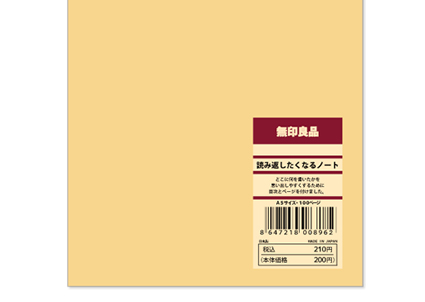
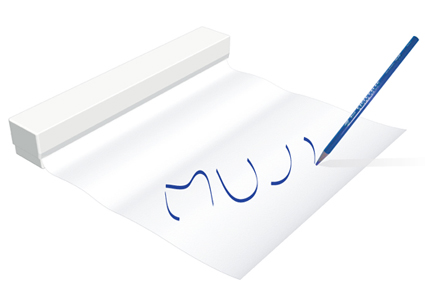

A notebook – although there’s really no other description or images provided, a judge’s comment hints at its function: “Also impressive is the notebook with indexed pages and table of contents. Rather than ‘a notebook you would want to read over and over’, as suggested by the title, it is more wonderful that this makes looking for a certain page wherein particular notes have been written an effortless task.”
A Paper Roll – Think of your kitchen aluminum foil, except it’s paper. For drawing, writing, etc.
A Cable Extension – Conceals your power cables neatly out of sight.
The full results are here.



